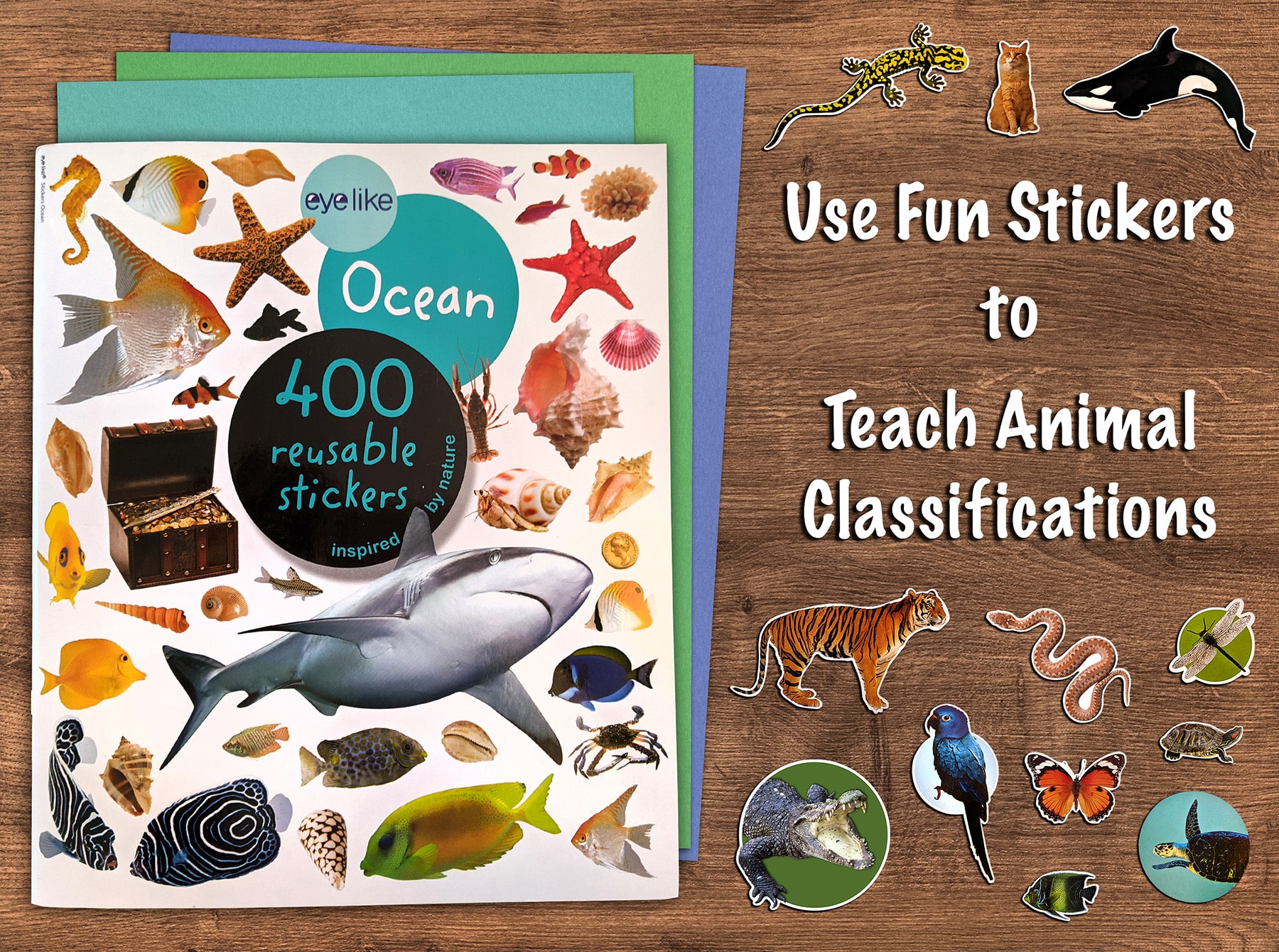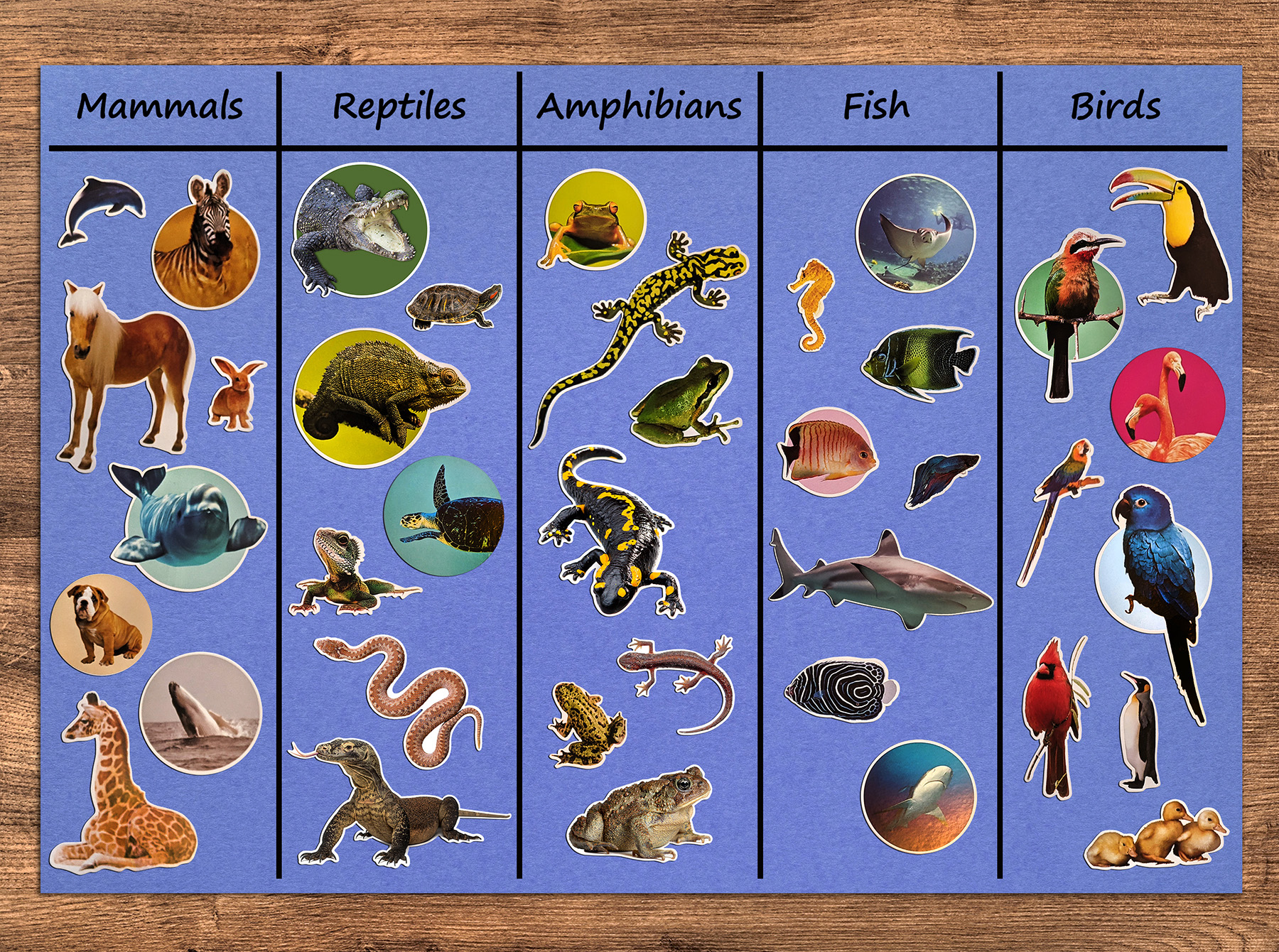
Get ready to learn all about animal groups with a hands-on science activity your students will love! In this month's blog post, we'll show you an awesome activity that teaches children about animal classifications using fun animal stickers. Read on to find out more!
You and your students are going to love learning about animal groups with this fun animal sorting activity. You can use this simple science game to practice three animal group concepts: vertebrates and invertebrates; mammals, reptiles, amphibians, birds, and fish; and animals with shared characteristics, like camouflage. All you need for this science activity is a variety of animal stickers, a notebook or sheet of paper, and a pencil or marker. Let's get started!

Help your students learn to differentiate between vertebrates, animals with a backbone, and invertebrates, animals without a backbone. For this activity, be sure you have a good mix of vertebrate and invertebrate animal stickers to choose from. You can use insect stickers or sea life stickers to add more invertebrates to the mix (for example: ant, earthworm, squid, lobster, etc.). You can either ask students to pick out different animal stickers from the full sticker sheets you provide, or you can cut up the individual stickers from each sheet and mix them up to make the activity more challenging.
Here's how it works:
Students will draw or trace two circles onto a sheet of paper. They will label one circle "Vertebrates" and the other circle "Invertebrates."
Students will then sort the animal stickers into either circle according to whether the animal is a vertebrate or invertebrate.
When students have finished sorting the animals, you can go over the right answers together as a class.

You can also use this animal sorting game to teach little ones about the different vertebrate classifications: mammals, reptiles, amphibians, fish, and birds. You will set up the activity the same way as the vertebrate and invertebrate sorting game. Since there are five categories to sort in this version of the activity, you can either ask your students to draw smaller circles or construct a simple chart with five columns, like we did in our example.
Students will set up their sorting circles or charts and label their animal classification categories, "Mammals," "Reptiles," "Amphibians," "Fish," and "Birds."
Students will then sort the animals into the correct category. You may wish to review the characteristics of each group before your students sort the animals to help them with identification.
When your students have finished the sorting activity, you can review the correct animals for each category together.

Another variation on this animal sort activity is to sort animals according to shared characteristics. Here are some categories you might consider for this animal sort:
Students will again sort their animal stickers into the categories you choose for this activity.
After sorting, you can discuss all the different animal possibilities for each category together as a class.
We hope you and your students try out this fun science sorting game to learn more about animal groups. This is a great activity to do with students in second, third, fourth, or fifth grade. You can use this science activity as an individual exercise or a whole-class game. You could even make it an at-home assignment.
How will you and your students sort your animal stickers? Drop us a line in the comment section below and be sure to tag @superteacherworksheets on social media so we can check out your animal adventures!
Looking for more educational activities featuring vertebrates and invertebrates, animal classifications, and more? Visit the Super Teacher Worksheets Animal Groups page today!
You may also like: